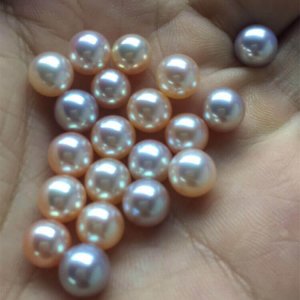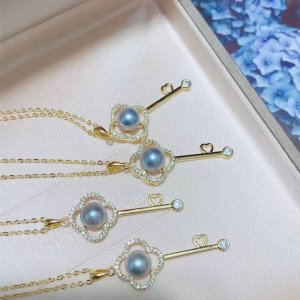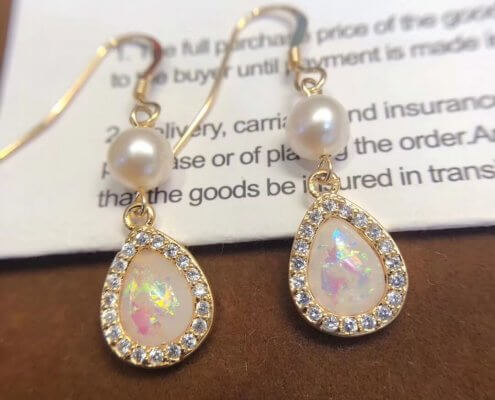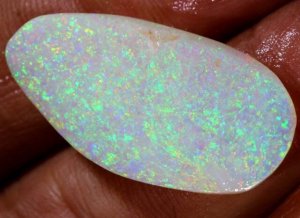Baroque pearls are some of the most fascinating organic gems available on the jewelry market. A baroque pearl is any pearl that is asymmetrical in shape as opposed to the classic round shape. Any irregularly shaped pearl is known as baroque, and shapes can range from minor aberrations to distinctly oval, curved, pinched, or lumpy shapes. A pearl which might otherwise be considered an oval, button or drop pearl but which is not symmetrical in nature, would be considered semi-baroque. Though baroque look different from traditional pearls, they have their own unique beauty.
They are the ideal choice for bold women who want to show the world just how special they are. They are the absolute opposite of traditional pearls because each one has its very own shape and size. This makes them extremely easy to use to create gorgeous pieces meant to fit every style. But just how valuable are baroque pearls? Let us tell you a few things about them, just to give you an idea of their significance and value.
WHAT ARE BAROQUE PEARLS?
The shape is one of the key factors taken into consideration when assessing pearls. There are two main types of peals out there, each of them branched out in subtypes. If a pearl is round, it is considered to be a traditional pearl. As for all the other irregular shaped ones, they are considered baroque.
Baroque versions get their shapes naturally when the original debris becomes lodged in the mollusk’s muscle tissue. Baroque pearls can also be manipulated, by inserting an object into the mollusk once the pearl starts to form, interfering with the gem’s shape. Both saltwater and freshwater pearls can be baroque, but most of the culturing takes place in freshwater gems.
Most cultured freshwater pearls are baroque because freshwater pearls are mantle-tissue nucleated instead of bead nucleated. Cultured saltwater pearls can also be baroque, but tend to be more teardrop-shaped due to the use of a spherical nucleation bead.
South Sea baroque pearls (pictured above) are often the largest baroque pearls, and can often reach 20mm. South Sea baroque pearls are therefore the most valuable of all irregular pearls, with Tahitian in close second. The most expensive baroque pearl is often still cheaper than a round pearl, though. Tahitian pearl farm harvests, for example, produce more than 40 percent baroque and semi-baroque pearls.
Though some may scoff at their irregular shape, the uniqueness of each baroque pearl is truly a beautiful sight. A Baroque pearl necklace will attract the eye due to its size and inconsistency as will any piece of Baroque jewelry.
Baroque pearls might be one of the least expensive types of pearls on the market, but they hold historical significance. The pearls received high recognition by Renaissance jewelers, who often used them in to create artistic designs. Not only was baroque jewelry popular among the wealthy, members of royalty from different countries sometimes used the pearls to adorn their crowns.
The most common type are baroque freshwater pearls. Only less than 10% of freshwater pearls are round, which means that the vast majority of these pearls are baroque. But these are not the only types of pearls which are baroque. Saltwater pearls, as well as cultured and natural ones, also come in baroque shapes. Even some Akoya pearls, which are best known for their perfectly round specimens, have baroque shapes.
WHAT ARE THE MAIN BAROQUE PEARL SHAPES?
As we have previously mentioned, there are quite a few subtypes of baroque pearls. While all of them are misshapen, there are some features shared by certain specimens. Here are some of the subtypes of baroque pearls so that you can get an idea of just how vast this category really is.
COIN PEARLS
Coin pears are a subtype of baroque pearls. They are round in shape and flat and their surface is very smooth. They are able to reflect light particularly well because they have a much larger flat surface than other types. This provides them with a spectacular luster. They are extremely appreciated in the jewelry making business because they can be used for amazing pieces, such as baroque pearl necklaces or baroque pearl earrings.
BAROQUE PEARLS
While baroque is the common term used to describe pearls that are not round, it is also one of the subtypes. It includes pearls shaped like elongated spheres. They are asymmetrical and their surface is dented and uneven. These pearls were greatly used in Victorian and Art Nouveau pieces.
TWIN PEARLS
This term is used to define two pearls that have fused together. They may have similar shapes or one of them might be larger than the other. They are ideal for baroque pearl stud earrings because they appear to be extremely elegant.
POTATO PEARLS
These are the smallest types of baroque pearls. They are not elongated, like other baroque shaped ones; instead they are small and often square, rounder, or lumpy. They are ideal for baroque pearl bracelets and baroque pearl necklaces.
CROSS PEARLS
This is a very special type of baroque pearl. The specimens from this category come in the shape of a cross, which makes them ideal for jewelry pieces with religious notes. They are true wonders of the natural world.
STICK PEARLS
Also known as BIWA pearls, stick pearls are elongated, flat, and narrow. Their shape resembles sticks of various sizes. Stick pearl pieces are absolutely stunning. They can be easily used for statement pieces because of their particular shape.
RICE PEARLS
These are small baroque pearls that resemble the shape of rice grains. They are rather close to traditional pearls because they are rounded, but remain imperfect. They are commonly drilled centrally and used for baroque necklaces and baroque bracelets.
EGG PEARLS
As the name suggests, the shape of the pearls from this subtype greatly resembles that of an egg. They have a wide bottoms and narrow tops. They are usually drilled vertically to preserve and highlight their unique shape.
HEART PEARLS
Similar to coin pearls, these baroque pearls are flat and have the shape of a heart. They are extremely appreciated in the jewelry making business because they can be used to create romantic baroque pearl pendants.
TEARDROP PEARLS
This is one of the most appreciated subtype of baroque pearls. They have a wide top and very narrow bottom that makes them resemble teardrops. They are extremely delicate and they are commonly used for luxury earrings.
LEAF PEARLS
These are the thinnest baroque shaped pearls. They are paper thing with a very bumpy and uneven surface. They can be used for a wide range of jewelry pieces, including bracelets, necklaces, and earrings.
KESHI PEARLS
Keshi pearls are the rarest type of baroque pearls. The mollusk rejects part of the seed, but the pearl continues to develop from there. This is why they do not have a center particle. They are mainly composed of nacre and appear to be elongated and have an extraordinary luster. They are the most appreciated baroque pearls on the jewelry market.
Baroque pearls might be one of the least expensive types of pearls on the market, but they hold historical significance. The pearls received high recognition by Renaissance jewelers, who often used them in to create artistic designs. Not only was baroque jewelry popular among the wealthy, members of royalty from different countries sometimes used the pearls to adorn their crowns.
BAROQUE PEARLS VALUE FACTORS
Because of their unusual shapes, baroque pearls cannot be assessed according to the standards imposed for traditional pearls. While some criteria are used to analyze both types of pearls, there is a very different way of interpreting the value of baroque pearls.
- Type
The type of pearl that appears baroque shaped is always the main factor that determines its value. While the vast majority of misshapen pearls are freshwater pearls, their value is far lesser than that of baroque Akoya pearls, for example.
- Shape
While traditional pearls are assessed according to how well-rounded they are, baroque pearls are analyzed according to the particular shape they take. As we have explained above, the most valuable baroque shaped pearls are Keshi pearls, baroque pearls and cross pearls.
 |
| https://www.smartyleowl.com/product/circle-pendant/ |
Size
Whether it is traditional or irregular in shape, the size of a pearl will always be extremely important for determining its value. As for classic pearls, the larger the pearl, the more valuable it is.
- Color
Baroque pearls are used to create a wide range of jewelry pieces. As such, the color of the pearl is very important in assessing its value. Since most irregular pearls come in shades or white, salmon and pink, dark-colored pearls are the most valuable because they are extremely rare.
- Luster
A pearl’s luster is determined according to how well they can reflect light. Coin pearls and Keshi pearls are the most valuable types of baroque pearls because they have the best luster in the entire category.
























